Effect of Post-Processing Heat Treatment on Micro-Contact Damage of Zirconia-Reinforced Lithium Silicate Dental Materials
Abstract
:1. Introduction
2. Experimental Procedure
2.1. Materials Processing
2.2. Microstructural Characterization
2.3. Mechanical Characterization
2.4. Stress Simulations
3. Results and Discussion
3.1. Microstructure
3.2. Mechanical Properties
3.3. Contact Damage
3.4. Resistance to Sliding Fracture
3.5. General Discussion
3.6. Implications and Future Studies
4. Conclusions
- The heat treatment does not significantly alter the crystallinity of the ZLS glass-ceramics, but it does reduce the frequency and size of processing flaws compared to the untreated material.
- Within experimental errors, the heat treatment does not impact the elastic modulus, hardness, and indentation fracture toughness of the materials.
- The heat treatment leads to an increase in critical loads for fracture and chipping in both axial and sliding contacts, with critical loads decreasing as the contact size decreases.
- A significant improvement in fracture strength, as measured from scratch tests, is observed with statistical (Weibull) significance following the heat treatment.
- The enhanced resistance to contact damage can be attributed to the refinement of the flaw population achieved through the heat treatment.
Author Contributions
Funding
Institutional Review Board Statement
Informed Consent Statement
Data Availability Statement
Conflicts of Interest
References
- Zhang, F.; Reveron, H.; Spies, B.C.; Van Meerbeek, B.; Chevalier, J. Trade-off between fracture resistance and translucency of zirconia and lithium-disilicate glass ceramics for monolithic restorations. Acta Biomater. 2019, 91, 24–34. [Google Scholar] [CrossRef]
- Zhang, Y.; Sailer, I.; Lawn, B.R. Fatigue of dental ceramics. J. Dent. 2013, 41, 1135–1147. [Google Scholar] [CrossRef] [PubMed]
- Kruzic, J.J.; Arsecularatne, J.A.; Tanaka, C.B.; Hoffman, M.J.; Cesar, P.F. Recent advances in understanding the fatigue and wear behavior of dental composites and ceramics. J. Mech. Behav. Biomed. Mater. 2018, 88, 504–533. [Google Scholar] [CrossRef]
- Wendler, M.; Belli, R.; Petschelt, A.; Mevec, D.; Harrer, W.; Lube, T.; Danzer, R.; Lohbauer, U. Chairside CAD/CAM materials. Part 2: Flexural strength testing. Dent. Mater. 2017, 33, 99–109. [Google Scholar] [CrossRef]
- Borrero-Lopez, O.; Guiberteau, F.; Zhang, Y.; Lawn, B.R. Wear of ceramic-based dental materials. J. Mech. Behav. Biomed. Mater. 2019, 92, 144–151. [Google Scholar] [CrossRef]
- Sanchez-Gonzalez, E.; Borrero-Lopez, O.; Rodriguez-Rojas, F.; Hoffman, M.; Guiberteau, F. Chipping of ceramic-based dental materials by micrometric particles. J. Am. Ceram. Soc. 2023, 106, 1309–1320. [Google Scholar] [CrossRef]
- Rodríguez-Rojas, F.; Borrero-López, O.; Sánchez-González, E.; Hoffman, M.; Guiberteau, F. On the durability of zirconia-reinforced lithium silicate and lithium disilicate dental ceramics under severe contact. Wear 2022, 508–509, 204460. [Google Scholar] [CrossRef]
- Borrero-Lopez, O.; Guiberteau, F.; Zhang, Y.; Lawn, B.R. Inverse correlations between wear and mechanical properties in biphasic dental materials with ceramic constituents. J. Mech. Behav. Biomed. Mater. 2020, 105, 103722. [Google Scholar] [CrossRef] [PubMed]
- Zhang, Y.; Lawn, B.R. Evaluating dental zirconia. Dent. Mater. 2019, 35, 15–23. [Google Scholar] [CrossRef] [PubMed]
- Zhang, Y.; Lawn, B.R. Novel Zirconia Materials in Dentistry. J. Dent. Res. 2018, 97, 140–147. [Google Scholar] [CrossRef]
- Zhang, Y.; Chai, H.; Lee, J.J.W.; Lawn, B.R. Chipping Resistance of Graded Zirconia Ceramics for Dental Crowns. J. Dent. Res. 2012, 91, 311–315. [Google Scholar] [CrossRef] [PubMed]
- Vichi, A.; Zhao, Z.J.; Paolone, G.; Scotti, N.; Mutahar, M.; Goracci, C.; Louca, C. Factory Crystallized Silicates for Monolithic Metal-Free Restorations: A Flexural Strength and Translucency Comparison Test. Materials 2022, 15, 7834. [Google Scholar] [CrossRef] [PubMed]
- Celtra® Duo. Zirconia—Reinforced Lithium Silicate (ZLS). In Developed to Make a Difference—Brochure for the Dental Laboratory; Dentsply Sirona: Lancaster, PA, USA, 2017. [Google Scholar]
- Rodriguez-Rojas, F.; Borrero-Lopez, O.; Sanchez-Gonzalez, E.; Rios, J.D.; Guiberteau, F. Investigating correlations between translucency and wear resistance in lithium silicate-based dental glass-ceramics. Bol. Soc. Esp. Ceram. Vidr. 2024, 63, 2–10. [Google Scholar] [CrossRef]
- Rodriguez-Rojas, F.; Borrero-Lopez, O.; Constantino, P.J.; Henry, A.G.; Lawn, B.R. Phytoliths can cause tooth wear. J. R. Soc. Interface 2020, 17, 20200613. [Google Scholar] [CrossRef]
- World Health Organization. Hazard Prevention and Control in the Work Environment: Airborne Dust. Available online: https://apps.who.int/iris/handle/10665/66147 (accessed on 31 May 1999).
- Lawn, B.R. Indentation of ceramics with spheres: A century after Hertz. J. Am. Ceram. Soc. 1998, 81, 1977–1994. [Google Scholar] [CrossRef]
- Lawn, B.R. Fracture of Brittle Solids; Cambridge University Press: Cambridge, UK, 1993. [Google Scholar]
- Green, D.J. An Introduction to the Mechanical Properties of Ceramics; Cambridge University Press: Cambridge, UK, 1998. [Google Scholar]
- Hamilton, G.M.; Goodman, L.E. Stress Field Created by a Circular Sliding Contact. J. Appl. Mech. 1966, 33, 371–376. [Google Scholar] [CrossRef]
- ASTM C1239-00; Standard Practice for Reporting Uniaxial Strength Data and Estimating Weibull Distribution Parameters for Advanced Ceramics. ASTM International: West Conshohocken, PA, USA, 2007.
- Sánchez-González, E.; Borrero-López, Ó.; Rodríguez-Rojas, F.; Pérez, J.A.; Hoffman, M. Fracture resistance of dental glass-ceramics under sliding contact. Ceram. Int. 2023, 49, 31727–31733. [Google Scholar] [CrossRef]
- Schwarzer, N. The extended Hertzian theory and its uses in analyzing indentation experiments. Philos. Mag. 2006, 86, 5179–5197. [Google Scholar] [CrossRef]
- Lubauer, J.; Belli, R.; Peterlik, H.; Hurle, K.; Lohbauer, U. Grasping the Lithium hype: Insights into modern dental Lithium Silicate glass-ceramics. Dent. Mater. 2022, 38, 318–332. [Google Scholar] [CrossRef]
- Belli, R.; Wendler, M.; de Ligny, D.; Cicconi, M.R.; Petschelt, A.; Peterlik, H.; Lohbauer, U. Chairside CAD/CAM materials. Part 1: Measurement of elastic constants and microstructural characterization. Dent. Mater. 2017, 33, 84–98. [Google Scholar] [CrossRef]
- D’Arcangelo, C.; Vanini, L.; Rondoni, G.D.; De Angelis, F. Wear properties of dental ceramics and porcelains compared with human enamel. J. Prosthet. Dent. 2016, 115, 350–355. [Google Scholar] [CrossRef] [PubMed]
- Marshall, D.B.; Cook, R.F.; Padture, N.P.; Oyen, M.L.; Pajares, A.; Bradby, J.E.; Reimanis, I.E.; Tandon, R.; Page, T.F.; Pharr, G.M.; et al. The Compelling Case for Indentation as a Functional Exploratory and Characterization Tool. J. Am. Ceram. Soc. 2015, 98, 2671–2680. [Google Scholar] [CrossRef]
- Anstis, G.R.; Chantikul, P.; Lawn, B.R.; Marshall, D.B. A Critical-Evaluation of Indentation Techniques for Measuring Fracture-Toughness: I. Direct Crack Measurements. J. Am. Ceram. Soc. 1981, 64, 533–538. [Google Scholar] [CrossRef]
- Lawn, B.R. Chipping: A pervasive presence in nature, science and technology. J. Mater. Sci. 2021, 56, 8396–8405. [Google Scholar] [CrossRef]
- Johnson, K.L. Contact Mechanics; Cambridge University Press: Cambridge, UK, 1987. [Google Scholar]
- Lawn, B.R. Partial Cone Crack Formation in a Brittle Material Loaded with a Sliding Spherical Indenter. Proc. R. Soc. Lond. Ser. A-Math. Phys. Sci. 1967, 299, 307–316. [Google Scholar] [CrossRef]
- Sanchez-Gonzalez, E.; Miranda, P.; Diaz-Parralejo, A.; Pajares, A.; Guiberteau, F. Influence of zirconia sol-gel coatings on the fracture strength of brittle materials. J. Mater. Res. 2005, 20, 1544–1550. [Google Scholar] [CrossRef]
- Sheth, N.; Greenley, C.; Bermejo, R.; Mauro, J.C.; Pantano, C.G.; Kim, S.H. Effects of acid leaching treatment of soda-lime silicate glass on crack initiation and fracture. J. Am. Ceram. Soc. 2021, 104, 4550–4558. [Google Scholar] [CrossRef]
- Baldi, A.; Comba, A.; Tempesta, R.M.; Carossa, M.; Pereira, G.K.R.; Valandro, L.F.; Paolone, G.; Vichi, A.; Goracci, C.; Scotti, N. External Marginal Gap Variation and Residual Fracture Resistance of Composite and Lithium-Silicate CAD/CAM Overlays after Cyclic Fatigue over Endodontically-Treated Molars. Polymers 2021, 13, 3002. [Google Scholar] [CrossRef]
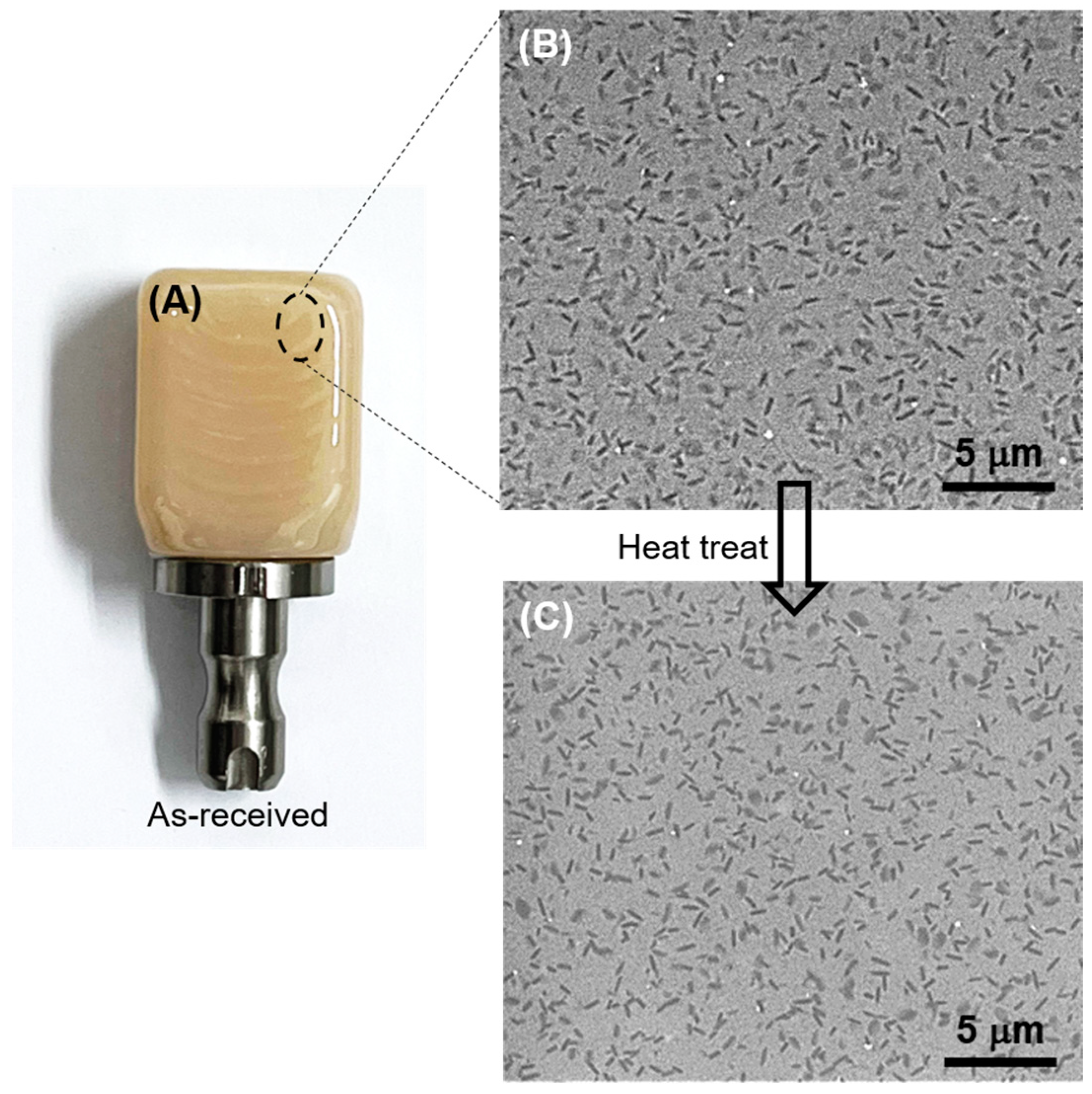
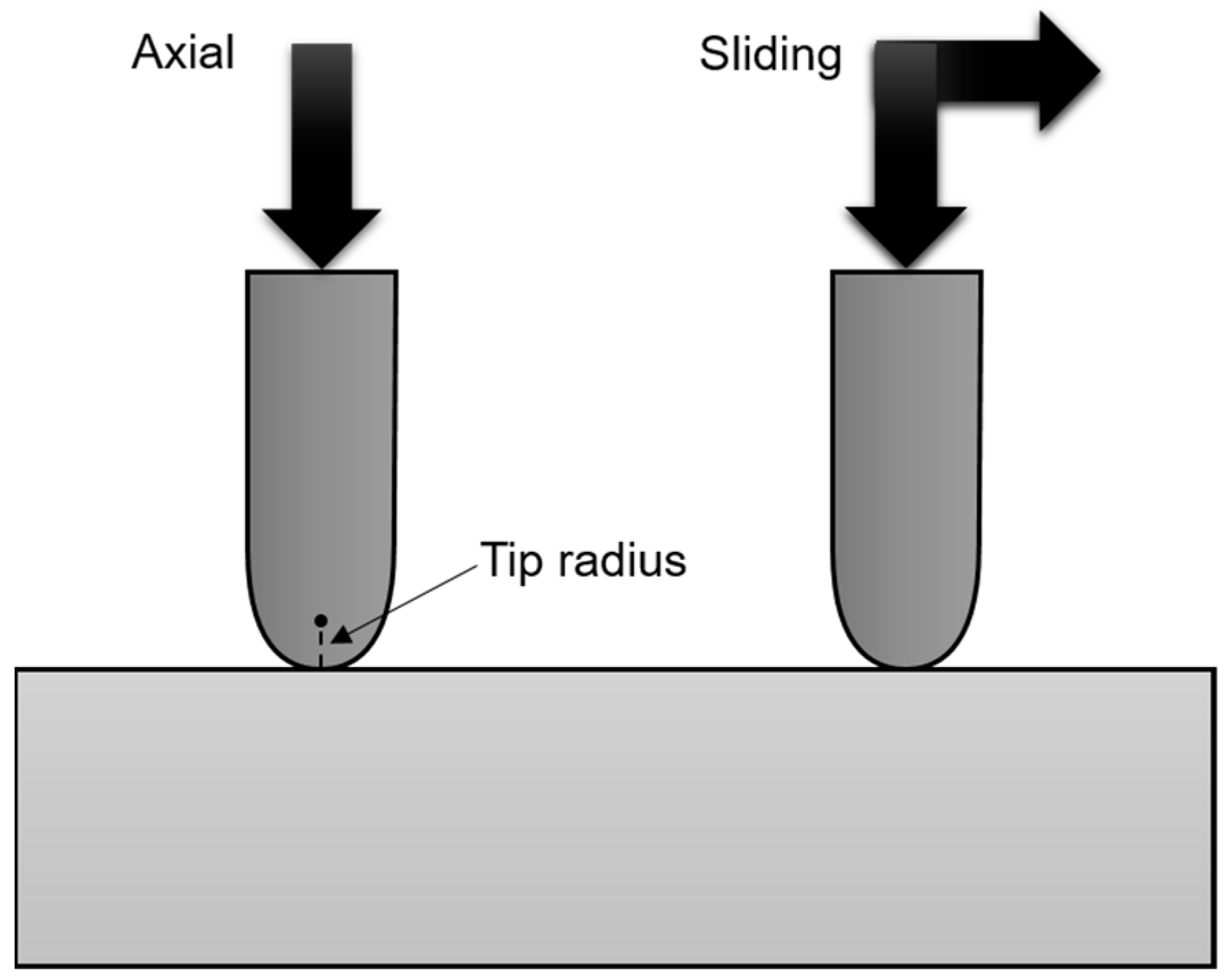
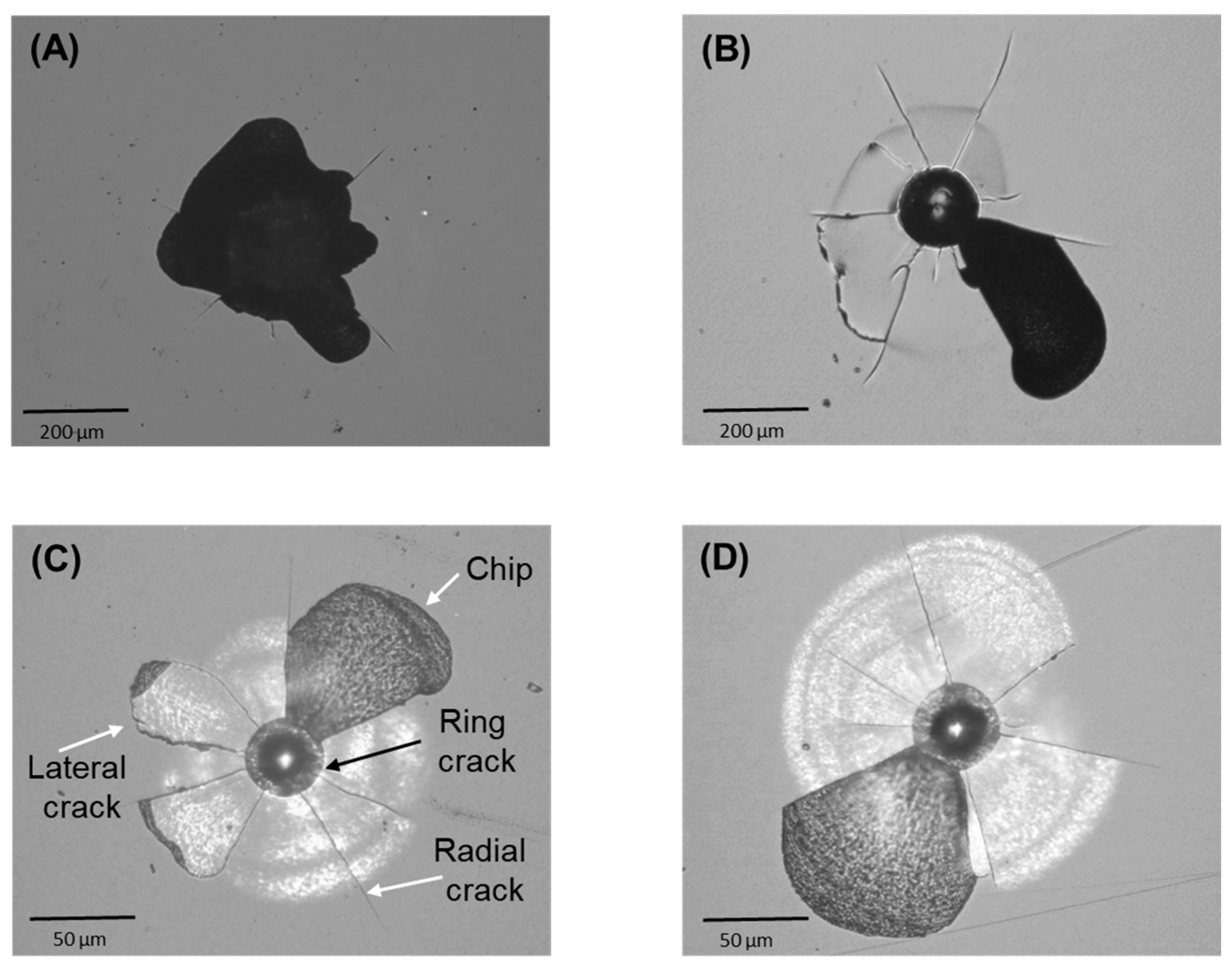
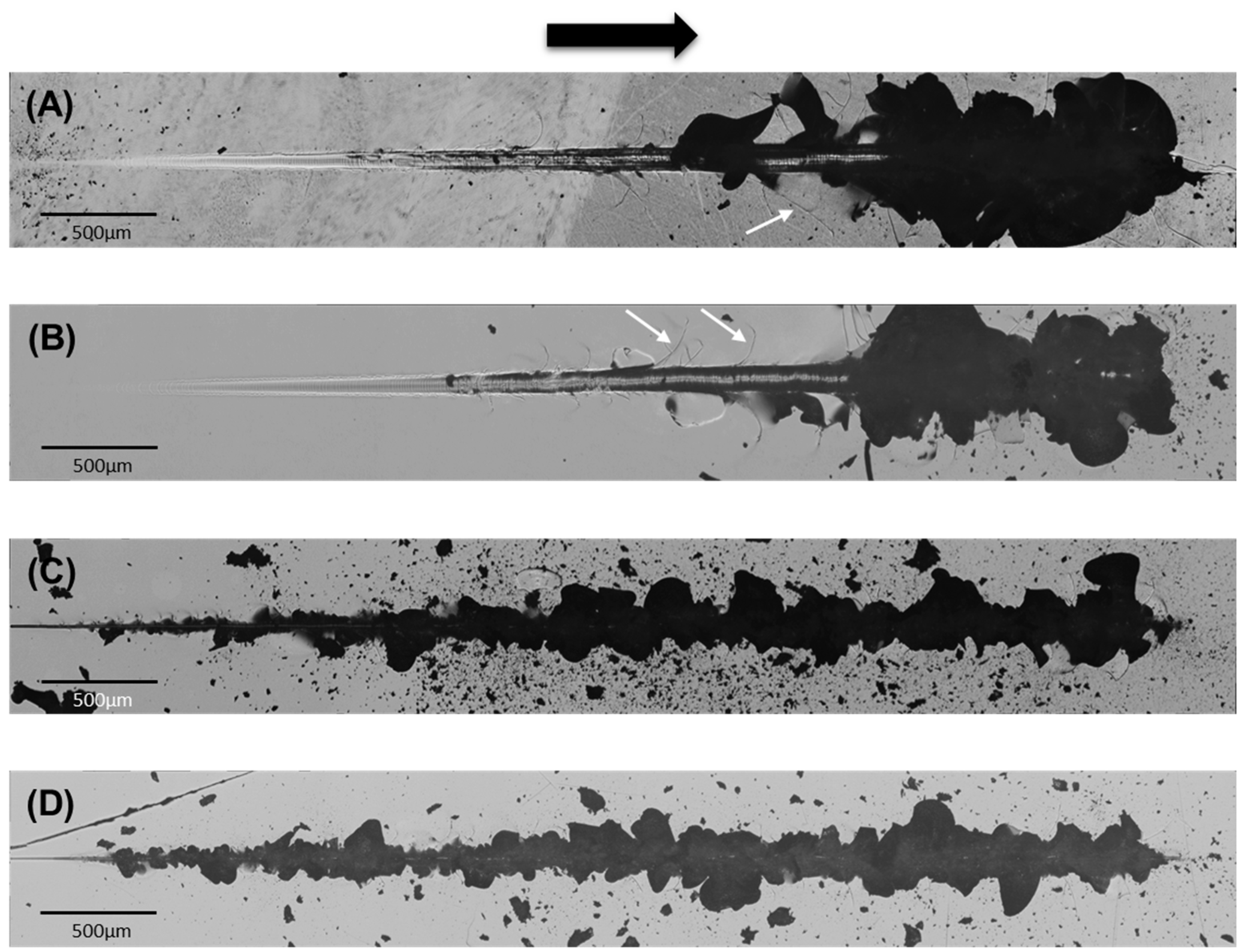
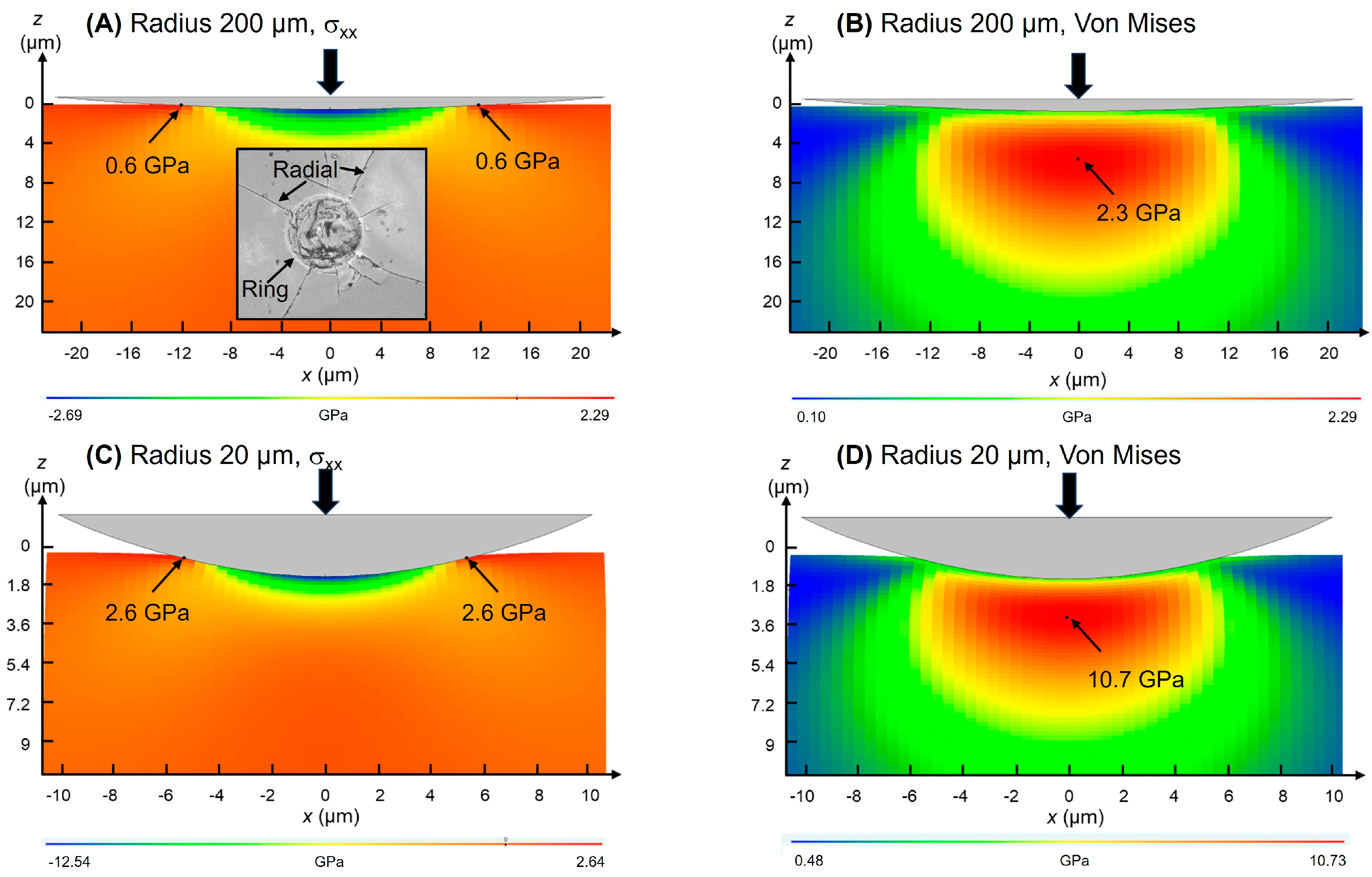
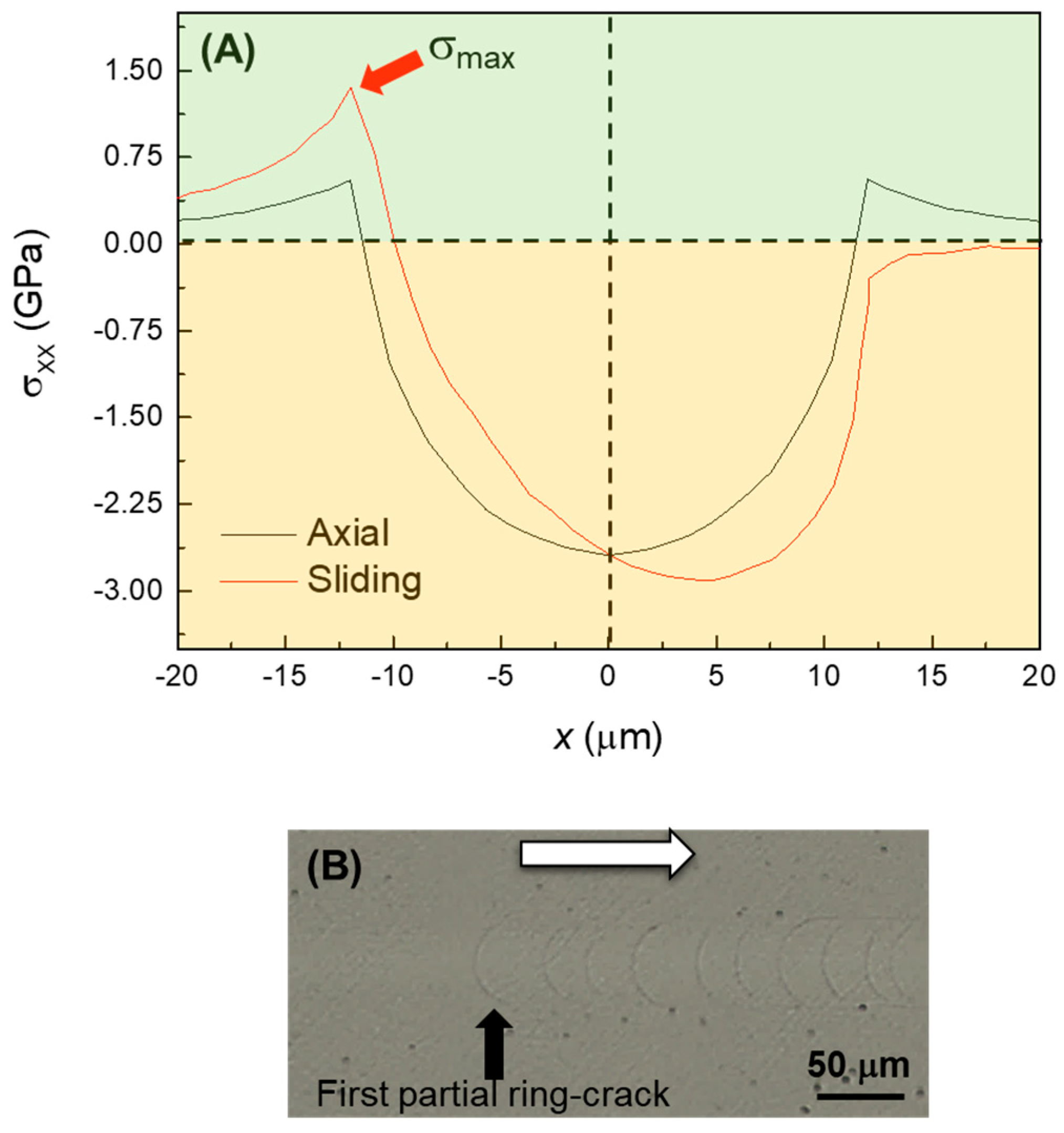
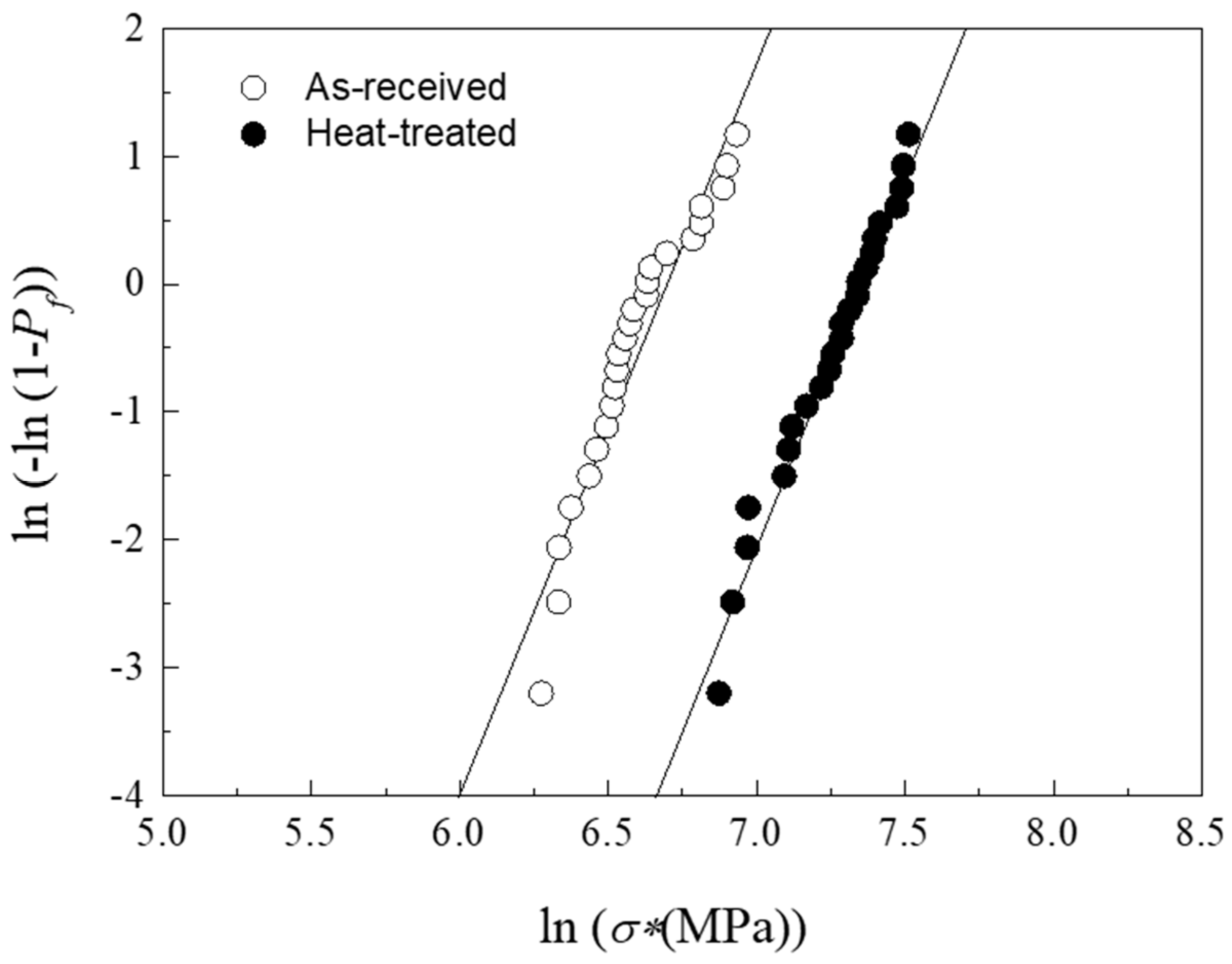

Disclaimer/Publisher’s Note: The statements, opinions and data contained in all publications are solely those of the individual author(s) and contributor(s) and not of MDPI and/or the editor(s). MDPI and/or the editor(s) disclaim responsibility for any injury to people or property resulting from any ideas, methods, instructions or products referred to in the content. |
© 2024 by the authors. Licensee MDPI, Basel, Switzerland. This article is an open access article distributed under the terms and conditions of the Creative Commons Attribution (CC BY) license (https://creativecommons.org/licenses/by/4.0/).
Share and Cite
Pérez, J.A.; Rodríguez-Rojas, F.; Borrero-López, Ó.; Sánchez-González, E. Effect of Post-Processing Heat Treatment on Micro-Contact Damage of Zirconia-Reinforced Lithium Silicate Dental Materials. Materials 2024, 17, 1961. https://doi.org/10.3390/ma17091961
Pérez JA, Rodríguez-Rojas F, Borrero-López Ó, Sánchez-González E. Effect of Post-Processing Heat Treatment on Micro-Contact Damage of Zirconia-Reinforced Lithium Silicate Dental Materials. Materials. 2024; 17(9):1961. https://doi.org/10.3390/ma17091961
Chicago/Turabian StylePérez, José A., Fernando Rodríguez-Rojas, Óscar Borrero-López, and Estíbaliz Sánchez-González. 2024. "Effect of Post-Processing Heat Treatment on Micro-Contact Damage of Zirconia-Reinforced Lithium Silicate Dental Materials" Materials 17, no. 9: 1961. https://doi.org/10.3390/ma17091961




